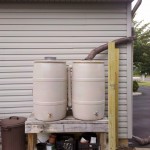Drought-busting lessons from the Land Down Under
March 1, 2016Spring is coming, which means summer is also around the corner. And with summer comes worries about drought. We were lucky last year, but western states didn’t fare as well. Still, things could be much worse.
California’s drought, for instance, is serious, but it’s nothing compared to Southern Australia’s “Millennium Drought,” which lasted 13 years.
Although they pulled through, it wasn’t by using the latest technology. Instead, their solutions were surprisingly old-school.
A 2015 report shows that one of the first things the affected region did was to improve water conservation among residents.
An article on Water Online states that “When drought ended in 2009, ‘residents of Melbourne, Australia’s second-largest city, were using half the amount of water they had when it began. … Reduced water demand occurred primarily through residential and industrial water conservation programs, restrictions, together with emergency reductions in the environmental release of water to streams. The city also experimented with using recycled water, in place of surface water, to support agriculture.”
Another huge water-saver was a $2,000 rainwater tank — which took the place of a $6 billion desalination plant.

Researchers here in the U.S. have been studying the Land Down Under’s methods in the hopes of learning from them, according to another Water Online article:
” ‘California has made significant progress in advancing water conservation and efficiency to cope with the drought, but this report shows that more can be done,’ said Heather Cooley, Director of the Water Program at the Pacific Institute, a global water think tank. The state has set conservation targets and communities have implemented short-term water conservation measures, such as restrictions on outdoor watering. But according to Cooley ‘Australia made much larger investments in water conservation and efficiency, which allowed them to cope with the millennium drought and also reduce vulnerability to future droughts.’ ”
‘In Australia, urban water efficiency was the quiet achiever and California can benefit from long-term structural changes in water use by implementing similar water-efficiency measures,’ said Mary Ann Dickinson, President and CEO of the Alliance for Water Efficiency.”
While our droughts here in Pennsylvania have been mild compared with California’s, we can also learn from the Australians’ methods. Conserving water every day, utilizing rain barrels and re-using gray water from showers and dish washing can go a long way toward reducing our water use, as can fixing leaky faucets, toilets and other fixtures.
After all, prevention is said to be the best medicine.